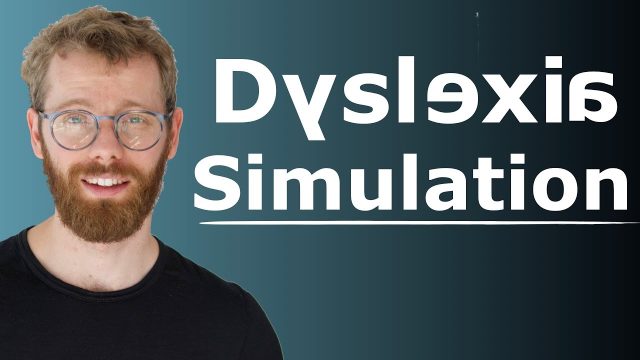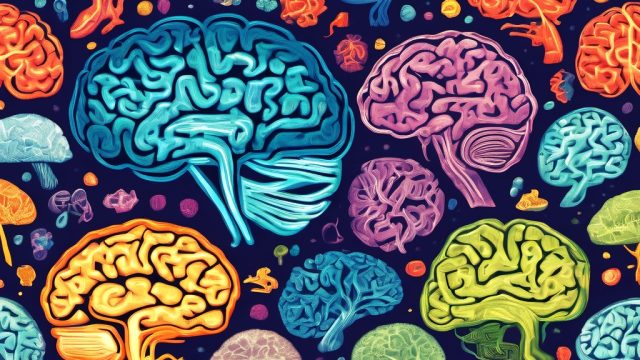Dysfunctional Science
How a study about dyslexia got things wrong
And how some researchers are starting to get things right (2022 update)

Human beings are very good at tuning things out – not noticing objects or events that are in plain sight, or becoming indifferent to distracting sounds in their environment, such as the whirr of a fan. Psychologists and other scientists who have studied this tendency sometimes report startling and often amusing results. For example, the “Person Swap” where individuals approached by a stranger asking directions fail to notice when, after a momentary visual distraction, an entirely different stranger replaces the first inquirer.
And in the famous “Invisible Gorilla” experiment, observers who were asked to track the passing of a ball among players failed to notice an actor clad in a gorilla suit casually sauntering across the stage, even when the gorilla stopped to beat its chest.
As humorous as the experiments may be, this dulling of attention – referred to a “inattentional blindness” and “change blindness” — exists for a good reason. Quite simply, our brains could not handle the cognitive load of constantly having to attend to every sound, sight, and sensation in our environment. We need to be able to quickly and intuitively determine what is relevant, and filter out the irrelevant—without that, we’d never be able to complete tasks because our minds would constantly be bouncing from one distraction to another. Filtering out the irrelevant is what allows us to focus and sustain attention on whatever it is we are trying to do.

However, this very human tendency also can be dangerous. All manner of physical injuries can happen when a person’s mind is unprepared to respond to the unexpected. An otherwise careful driver may fail to notice a pet or a pedestrian who steps into their path outside the confines of a marked intersection. Thieves and pickpockets on crowded streets often make off with their loot as unnoticed as they were unexpected.
Fortunately, humans vary in their perceptual styles. Only about half of the ball-counters miss the gorilla; although those who do spot the gorilla may also be less accurate in reporting the number of ball passes. It’s just not that easy for our brains to multitask. But in the end, diversity of thought patterns helps everyone. You might not notice the unexpected hazard, but perhaps your partner will.
There is some evidence that, at least in some settings, some of the time, dyslexics are better at noticing the background and peripheral details that others miss. In a 2014 article in Scientific American (The Advantages of Dyslexia), dyslexic researcher Matthew Schneps described studies showing that dyslexic astrophysicists were more adept at identifying patterns associated with black holes in space; that dyslexics were better able to identify widely spaced letters flashed simultaneously in the center and periphery of a screen; and that dyslexics were better able to discern words spoken by voices widely distributed across a room.
After quoting a dyslexic medical researcher who attributed his career success to heightened sensitivity to “things out of place,” Schneps posed this question: if you were hiring a security guard, would you rather have the person who has the ability to focus deeply and ignore distractions, or one who capable of more diffuse attention, remaining alert to everything at once and highly sensitive to change in the environment? Obviously, a quality that is ideal in one setting can be detrimental in another.

All of this is why I was dismayed in 2016 when I read scientific research that provided clear evidence of a neural basis for these differing perceptual styles – and yet characterized this as a “dysfunction” among the dyslexic group. See: Dysfunction of Rapid Neural Adaptation in Dyslexia (Neuron, December 2016)
The underlying research methodology seemed sound. In a set of several experiments, dyslexic and non-dyslexic adults and children were exposed to various types of repeated stimuli, including listening to or reading words, or viewing repetitive displays of pictures of objects or faces. The researchers used a form of fMRI brain scanning which measured changes in the level of brain activity as the tasks progressed. This was intended to measure the degree to which brain activity tended to settle down as exposure to the repeated stimuli progressed – a measure of “neural adaptation”, or the way the brain stops reacting to familiar stimuli over time.
The experiments also produced a consistent and significant result:
“Across six experiments, we found that rapid neural adaptation… was diminished in children and adults with dyslexia for every stimulus type assessed, auditory language, visual language, visual objects, and faces.”
In other words, the researchers consistently saw a higher level of activity maintained over time in the brains of the dyslexic subjects. That higher activity level could also be correlated with separate measures of reading skills – those who were weaker readers tended to have higher levels of continued brain activity.
Although this experiment suffered from the problem endemic to all fMRI studies in that fMRI machines are annoyingly noisy, the data at least suggested a distinctive difference in mental processing patterns, even if ignoring the sounds emitted by the machine is one more thing that the non-dyslexics were better at.
If the researchers had left it at that, then it would have been a solid study.
But instead, they threw in a set of negative labels – “dysfunction” “impairment” “failure” “disruptions” “detrimental”. Nowhere did they so much as speculate whether the difference in overall mental processing might confer distinct advantages.
Somehow I suspect that if the results had been the opposite — if the dyslexic group had shown less sustained brain activity rather than more — those researchers would have been just as ready to label the opposite trend as evidence of a brain dysfunction. I certainly have read my share of research reports that do exactly that: if brain scans show less activity among dyslexic subjects, it is said to indicate a weakness; when the research shows more intense brain activity, it is described as evidence of overwork or inefficiency.
Even the researchers in the 2016 study noted:
“Learning to read is one of the most complex examples of human learning, the demands of which are evident from its lengthy and explicit instruction throughout childhood and into adulthood. There is no other human behavior that approaches reading’s demands for coordinating multimodal perceptual representations and cognitive processes.”
They also observed, correctly:
“Because reading is a relatively recent cultural invention rather than an adaptation honed by natural selection, any impairment in reading development must arise from some other, more fundamental difference in the structure or function of the dyslexic brain.”

Given that reading is something new and difficult that humans do, it is logical to conclude that difficulties in reading may arise from some difference in brain structure or function not directly related to learning to read. But it certainly does not follow that the difference is a defect or “dysfunction.” Maybe early humans did not evolve to read War and Peace or mentally track ball tosses, but they did evolve to avoid being stalked by tigers hidden among the rushes, bitten by snakes dropping from the trees, or snatched away by crocodiles lurking in still ponds.
And perhaps it is a good thing that we still have a few tiger-spotters in our midst.
And maybe a more scientific way of looking at any sort of biological or neurological difference is to either simply report the facts, without imposing value judgments or pejorative phrasing. A good scientist considers all possibilities.
This study produced useful data. It supported our view that dyslexia is the result of brain differences that are much more than simply a difference in the way the brain processes written material. It also added to the body of evidence as to how or why the Davis Orientation Counseling tools work, by enabling the person to exercise better control over mental focusing and perceptual awareness.
But characterizing a difference as a dysfunction undermined the value of the work. It revealed an inherent research bias. It also suggested that the researchers were looking for ways to suppress a natural function rather than understand and encourage abilities that could be at the root of dyslexic talents for artistry, invention, and problem-solving.
Updates – Are Researchers Changing their Perspective?
In 2018 and 2019, the journal “Brain Sciences” published two articles questioning the characterization of brain differences tied to dyslexia as a disorder. The researchers commented, “Whatever skill we look at, we find that different people are differentially effective (or efficient) in learning it.” Pointing out that the disabling impact of dyslexia arises only because of the current cultural importance placed on reading and literacy acquisition, they commented, “calling a brain improperly developed on the basis of cultural issues has absurd implications.”
More recently, in June 2022, in an article titled “Developmental Dyslexia: Disorder or Specialization in Exploration?, two British researchers suggested that “people diagnosed with developmental dyslexia (DD) are specialized in explorative cognitive search, and rather than having a neurocognitive disorder, play an essential role in human adaptation.” The researchers went on to describe the evolutionary survival benefits of individual specialization in different but complementary mental strategies. Using more scholarly terminology, the research article echoed the ideas presented in the commentary above about the advantages inherent in a more flexible and active thought process. The article also included an in-depth exploration of the science supporting this perspective. This latest article seems to have received a good deal of media attention. This is encouraging, as it might serve to raise awareness among other researchers.
Citations:
- Schneps, Matthew H. The Advantages of Dyslexia. Scientific American, August 19, 2014.
- Perrachione, Tyler K. et al. Dysfunction of Rapid Neural Adaptation in Dyslexia. Neuron , Volume 92 , Issue 6 , 1383 – 1397, 21 December 2016.
- Protopapas, Parrila. Is Dyslexia a Brain Disorder? Brain Sciences, 8(4), 61 (2018)
- Protopapas, Parrila. Dyslexia: Still Not a Developmental Disorder. Brain Sciences, 9(1), 9 (2019)
- Taylor, Helen & Vestergaard, Developmental Dyslexia: Disorder or Specialization in Exploration?, Frontiers in Psychology, Volume 13 | Article 889245 (2022)
This article was originally published on December 26, 2016. and updated with new information in June 2019 and August 2022.









